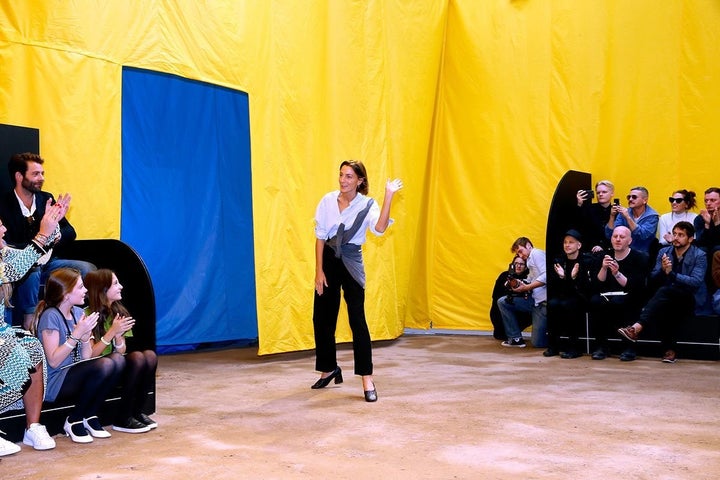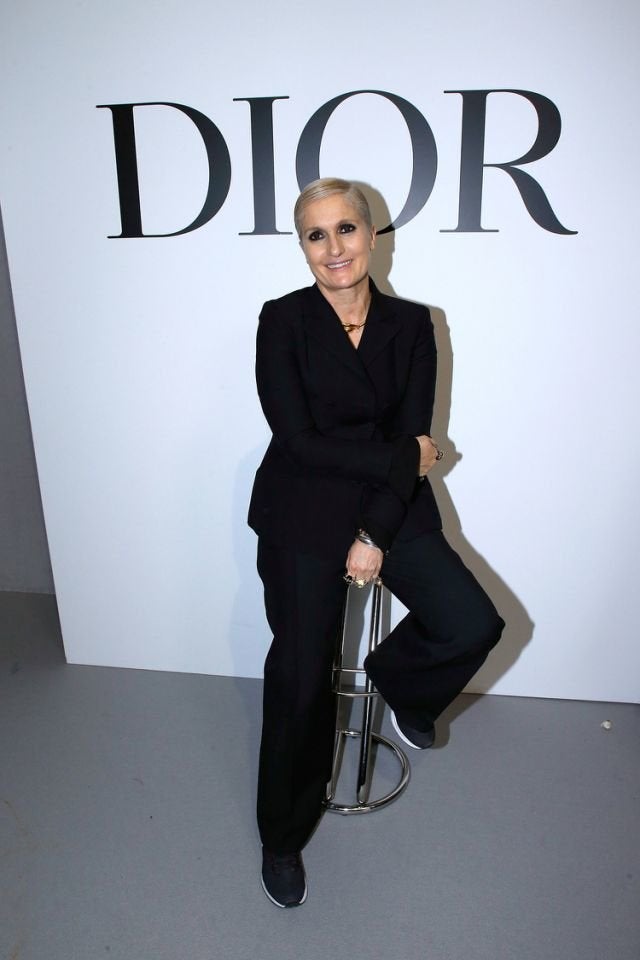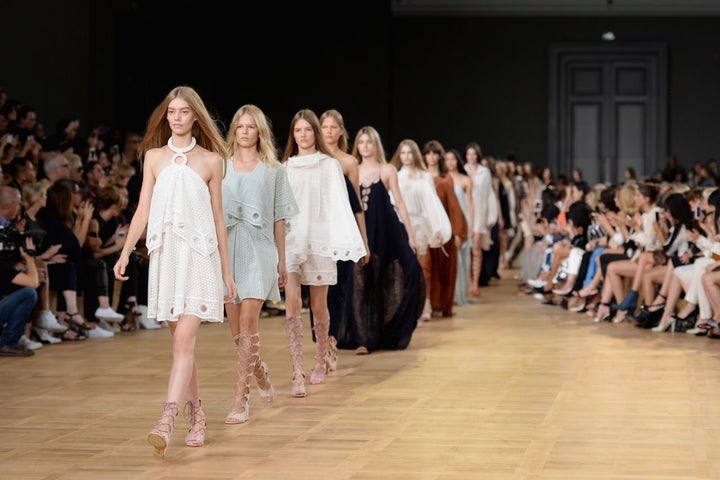
The fashion industry needs women — not just to buy its designs but to craft, build, maintain, and sustain it. And while new Givenchy creative director Clare Waight Keller is just a cog in a massive fashion machine, her debut Paris couture show on Jan. 23 was impressive nonetheless.
Keller is coming into a role previously held by a man whose aesthetic couldn’t be more different from her own. In her previous role as the creative director at Chloe, she molded the house into one for cool girls who play with both boyish tailoring and femme-bohème frocks. On Tuesday, she put out a collection of fluid gowns paired with sharp notes of men’s tailoring. It served as both a coming out and a commentary — on what women want in an age when long-held power dynamics are being disrupted.
The success of Keller’s first couture show leads us to wonder: Are clothes designed forwomen by women just, well, better?
At Hubert de Givenchy’s namesake house, Riccardo Tisci preceded Keller, injecting a sharp, at times gothic-glam aesthetic into collections whose campaigns growled menacingly — most iconically, with his fall 2011 menswear line, featuring the Rottweiler prints that would become symbolic of Tisci’s tenure. Keller made sly references to those campaigns with her first Givenchy campaign, which featured more sensual black cats. It wasn’t that Tisci’s Givenchy line lacked taste or vigor but instead lacked a touch of feminine perspective.

The Keller Givenchy couture debut coincides with news that French brand Céline has finally named its new creative director about a month after announcing Phoebe Philo’s departure: It’s Hedi Slimane, most recently of Yves Saint Laurent and Dior Homme. (Cue a dozen mournful elegies for a brand that spent years in simpatico with the modern, ultra-chic working woman, thanks to Philo’s touch.)
Then there’s Maria Grazia Chiuri (one half of the former star pairing at Valentino, alongside Pierpaolo Piccioli), who debuted her first collection chez maison Dior in 2016 as the brand’s first woman creative director ever. Critics only tepidly received the femme-heavy collection. Chiuri’s latest couture collection, paraded in Paris on Jan. 22, was a bit of an advancement.

The perhaps natural desire among some women to see more women leading fashion houses doesn’t erase the fact that plenty of men are doing it well. Raf Simons at Calvin Klein, Alessandro Michele at Gucci, and certainly Riccardo Tisci at Givenchy can and have delivered measurable financial success for their parent companies while also keeping in mind women’s sensibilities.
Rather, the argument for more women leading design houses and working as fashion executives is twofold: One, gender parity has yet to be achieved in an industry whose lifeblood is generated by women; and two, there is some evidence that women-led companies perform better than those led by their male counterparts in the long term.

In 2016, the Business of Fashion conducted an analysis of 371 designers at 313 brands and found that only 40 percent of the designers were women, a gender imbalance most evident in Paris and Milan, where couture (see also: fashion for fashion die-hards) reigns. Those figures matter when you consider that the majority of people who enroll in fashion education programs are women, yet many are filtered out throughout their careers. It’s a disconnect that reflects especially poorly on a trillion-dollar global industry so dependent on women’s tastes and wallets.
And it’s certainly in conglomerates’ best interests to promote more women, considering that women in corporate leadership positions generate an average of 25 percent higher returns than their male counterparts and have also been known to be “more ambitious and more successful.”
It’s perhaps a consideration worth pondering for Bernard Arnault at LVMH and François-Henri Pinault at Kering, conglomerates that own powerhouse brands like Louis Vuitton, Loewe, Gucci, and Yves Saint Laurent (each of which has a man as its creative lead).
Perhaps it will be Keller’s success at Givenchy that will convince them put women at the helm.
Read more from Yahoo Lifestyle:
